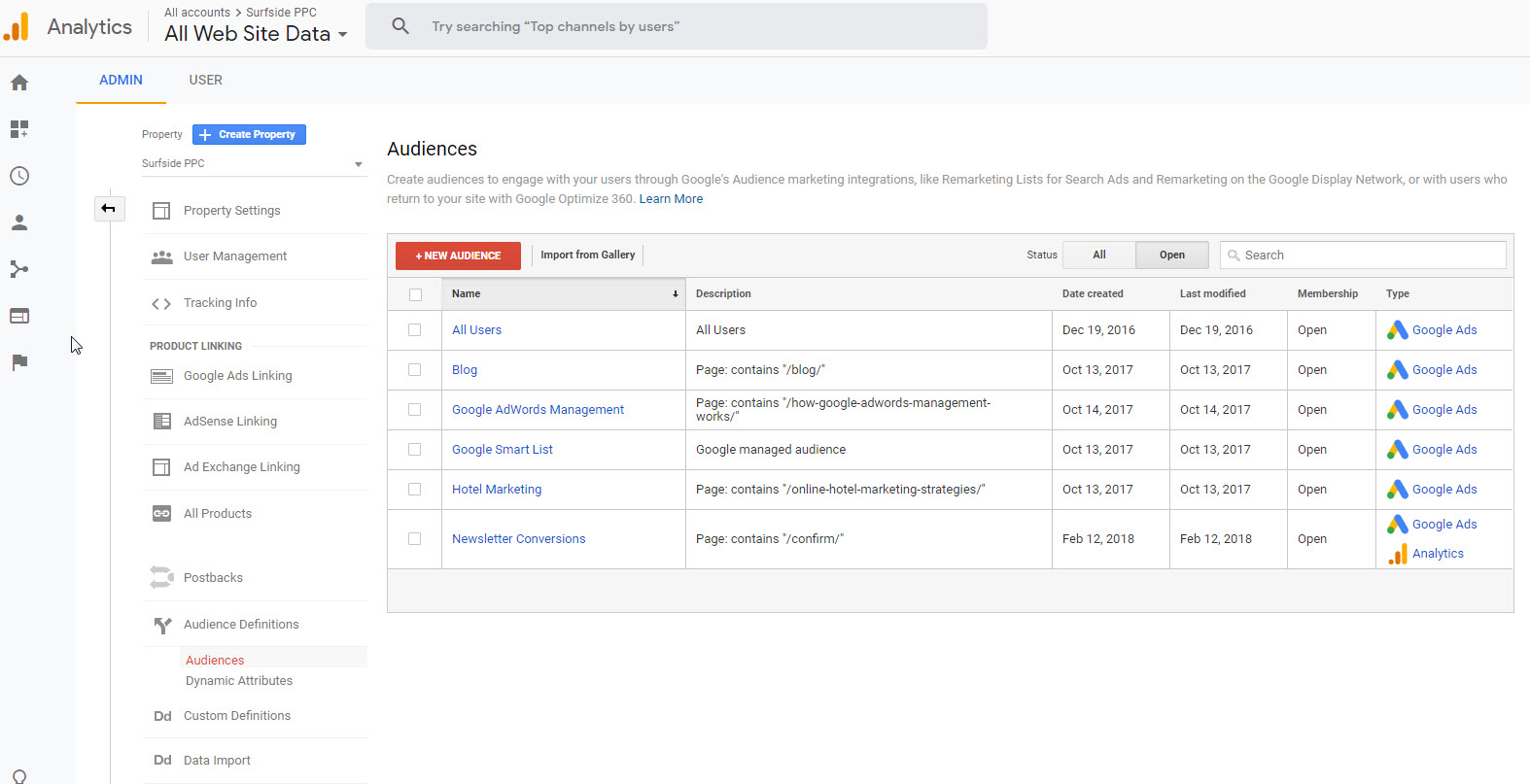Harnessing Remarketing in Google Analytics: A Comprehensive Guide
Taking advantage of remarketing in Google Analytics offers services a critical side in reaching out to potential clients. The capacity to target people that have already communicated with your internet site presents a special chance for tailored advertising and marketing efforts. By comprehending exactly how to craft target market lists and deploy them effectively, organizations can significantly boost their conversion prices. Nonetheless, the complexities of setting up and enhancing remarketing projects call for a detailed understanding of target market division and performance analysis. This guide will shed light on the necessary steps included in utilizing the complete potential of remarketing in Google Analytics, resulting in boosted marketing end results.
Comprehending Remarketing in Google Analytics
Remarketing in Google Analytics allows services to tactically target individuals that have formerly communicated with their website or mobile application. By leveraging information from Google Analytics, services can produce personalized remarketing lists based on individual actions, such as pages visited, actions taken, or specific goals accomplished. This powerful tool allows businesses to re-engage with users that have actually shown rate of interest in their items or solutions, inevitably boosting the probability of conversion.
Understanding the different types of remarketing methods is crucial for an effective project - What Is “Remarketing” In Google Analytics?. Google Analytics offers numerous choices, including common remarketing, vibrant remarketing, and remarketing listings for search advertisements (RLSA) Each type offers an unique objective and can be customized to meet details advertising purposes
Additionally, assessing the efficiency of remarketing projects is crucial for maximizing outcomes. Google Analytics gives beneficial insights into the efficiency of different remarketing methods, permitting services to make data-driven choices and refine their targeting method. By constantly keeping an eye on and readjusting remarketing efforts based upon analytics information, businesses can maximize ROI and drive success in their advertising and marketing efforts.
Establishing Up Remarketing Projects

After setting up audience lists, the next step is to connect Google Analytics with Google Advertisements. By connecting these 2 platforms, companies can effortlessly move target market listings from Google Analytics to Google Advertisements for remarketing objectives. This combination permits for more specific targeting and better campaign efficiency.
As soon as the accounts are connected, businesses can produce remarketing campaigns in Google Advertisements making use of the target market provides previously specified in Google Analytics. These projects can be customized with specific ad creatives, messaging, and bidding process methods to efficiently re-engage with previous visitors and drive conversions. By following these steps, companies can take advantage of the power of remarketing to enhance their advertising and marketing initiatives and enhance ROI.
Utilizing Audience Division Methods

Predefined sectors in Google Analytics allow you to quickly examine typical target market categories like new individuals, returning customers, or individuals that finished a specific goal on your site. Personalized sections, on the other hand, allow you to create one-of-a-kind sections based on details criteria that are very important to your company objectives. Dynamic remarketing listings instantly readjust based on user behavior, showing individualized advertisements to users that have engaged with your site particularly methods.
Studying Remarketing Efficiency Metrics
Upon examining the efficiency of remarketing projects in Google Analytics, the evaluation of key performance metrics gives important insights like this right into target market engagement and conversion prices. By delving into metrics such as click-through rates (CTR), conversion prices, price per acquisition (CERTIFIED PUBLIC ACCOUNTANT), and return on advertisement spend (ROAS), marketers can determine the success of their remarketing efforts. Assessing these metrics enables marketing experts to optimize projects, refine target market targeting, and allot spending plans successfully to boost general remarketing performance.
Optimizing Remarketing Methods
When refining remarketing methods in Google Analytics, concentrating on target market division is paramount for attaining project success. By splitting your audience into specific segments based on their actions, demographics, or rate of interests, you can tailor your ads better per team. This targeted approach enhances the possibility of engaging individuals that have already shown index passion in your solutions or products, leading to greater conversion rates.
Another crucial facet of enhancing remarketing methods is continually testing and refining your projects (What Is “Remarketing” In Google Analytics?). A/B screening different ad creatives, messaging, or offers can aid you recognize what reverberates best with your audience and drives one of the most conversions. By evaluating the efficiency of these examinations in Google Analytics, you can make data-driven choices to optimize your remarketing initiatives additionally
Furthermore, leveraging vibrant remarketing can considerably boost your project results. This attribute permits you to show customized advertisements to customers based on their past interactions with your site, showcasing solutions or products they have formerly seen. By delivering customized content to users based upon their rate of interests and behaviors, dynamic remarketing can assist raise interaction and drive conversions.
Final Thought
To conclude, harnessing remarketing in Google Analytics is a critical strategy to target customers that have actually previously involved with a web site. By creating customized audience checklists and making use of audience division approaches, organizations can optimize remarketing campaigns for boosted conversion straight from the source rates. Evaluating efficiency metrics and continually enhancing techniques are critical for taking full advantage of the effectiveness of remarketing initiatives.
Google Analytics uses various choices, including common remarketing, vibrant remarketing, and remarketing checklists for search ads (RLSA)After establishing up target market lists, the next step is to connect Google Analytics with Google Advertisements. By connecting these 2 platforms, organizations can seamlessly transfer target market checklists from Google Analytics to Google Ads for remarketing objectives.As soon as the accounts are linked, organizations can develop remarketing projects in Google Ads using the target market details formerly specified in Google Analytics.When refining remarketing techniques in Google Analytics, concentrating on target market segmentation is paramount for accomplishing project success.